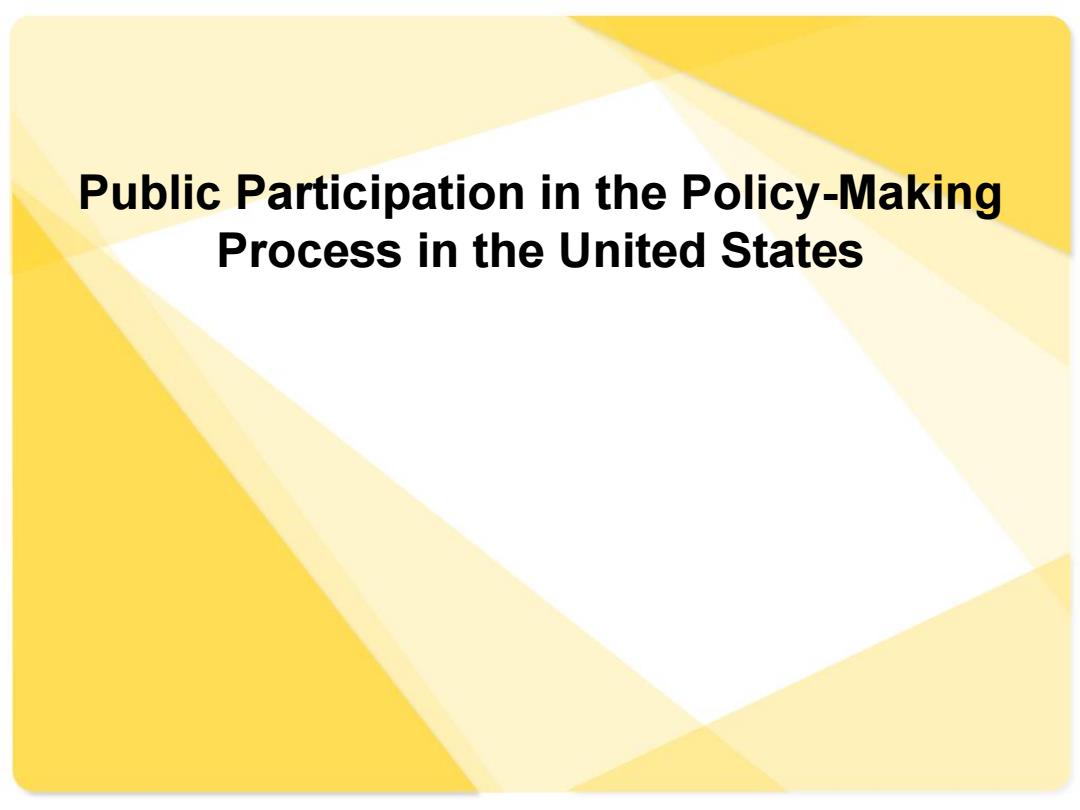
Public Participation in the Policy-Making Process in the United States
Public Participation in the Policy-Making Process in the United States
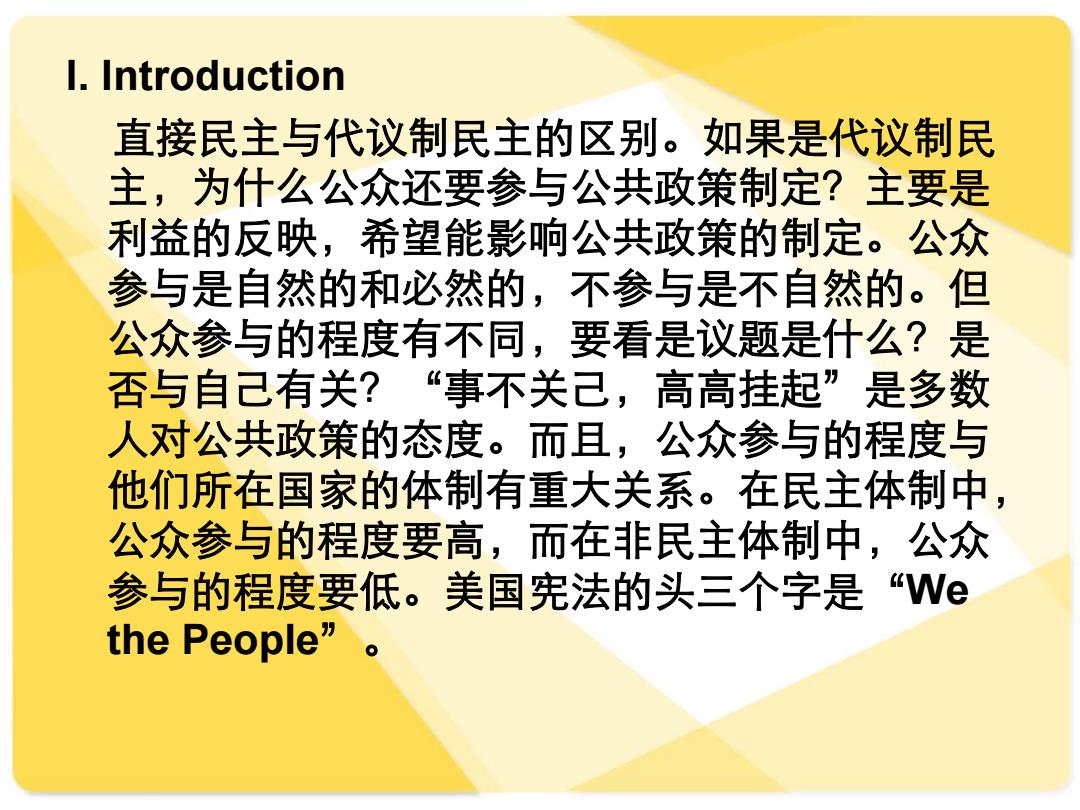
l.Introduction 直接民主与代议制民主的区别。如果是代议制民 主,为什么公众还要参与公共政策制定?主要是 利益的反映,希望能影响公共政策的制定。公众 参与是自然的和必然的,不参与是不自然的。但 公众参与的程度有不同,要看是议题是什么?是 否与自己有关?“事不关己,高高挂起”是多数 人对公共政策的态度。而且,公众参与的程度与 他们所在国家的体制有重大关系。在民主体制中, 公众参与的程度要高,而在非民主体制中,公众 参与的程度要低。美国宪法的头三个字是“We the People
I. Introduction 直接民主与代议制民主的区别。如果是代议制民 主,为什么公众还要参与公共政策制定?主要是 利益的反映,希望能影响公共政策的制定。公众 参与是自然的和必然的,不参与是不自然的。但 公众参与的程度有不同,要看是议题是什么?是 否与自己有关?“事不关己,高高挂起”是多数 人对公共政策的态度。而且,公众参与的程度与 他们所在国家的体制有重大关系。在民主体制中, 公众参与的程度要高,而在非民主体制中,公众 参与的程度要低。美国宪法的头三个字是“We the People”
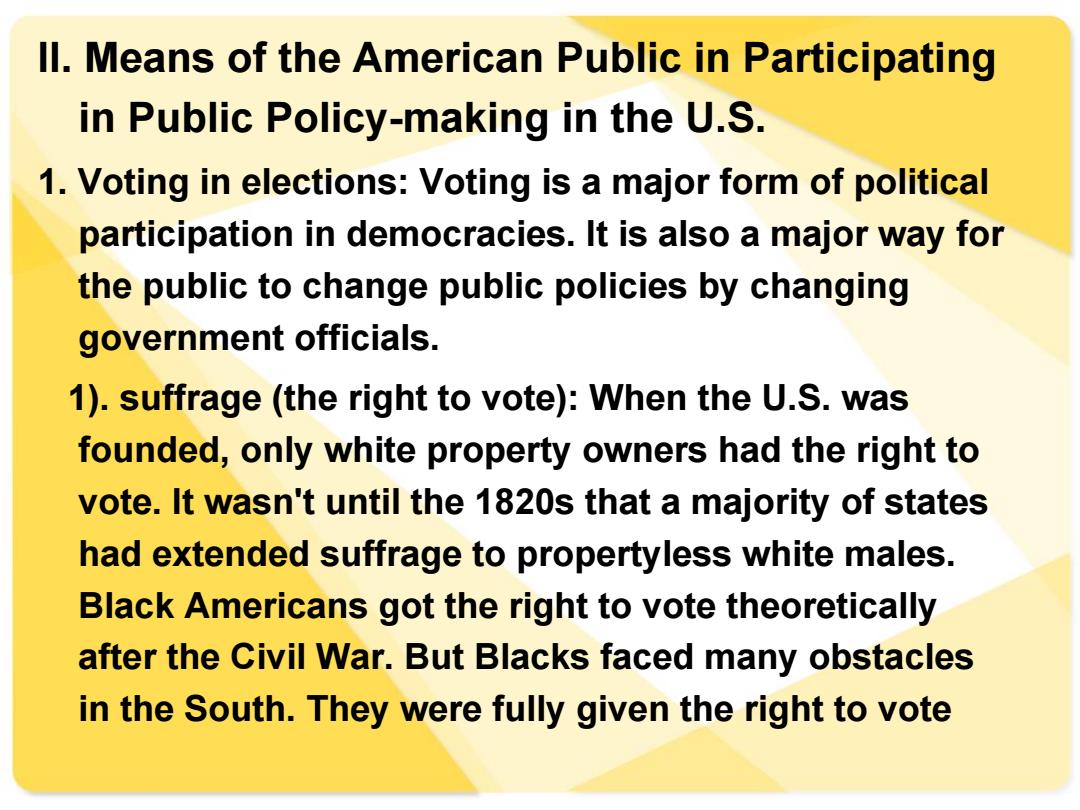
Il.Means of the American Public in Participating in Public Policy-making in the U.S. 1.Voting in elections:Voting is a major form of political participation in democracies.It is also a major way for the public to change public policies by changing government officials. 1).suffrage (the right to vote):When the U.S.was founded,only white property owners had the right to vote.It wasn't until the 1820s that a majority of states had extended suffrage to propertyless white males. Black Americans got the right to vote theoretically after the Civil War.But Blacks faced many obstacles in the South.They were fully given the right to vote
II. Means of the American Public in Participating in Public Policy-making in the U.S. 1. Voting in elections: Voting is a major form of political participation in democracies. It is also a major way for the public to change public policies by changing government officials. 1). suffrage (the right to vote): When the U.S. was founded, only white property owners had the right to vote. It wasn't until the 1820s that a majority of states had extended suffrage to propertyless white males. Black Americans got the right to vote theoretically after the Civil War. But Blacks faced many obstacles in the South. They were fully given the right to vote
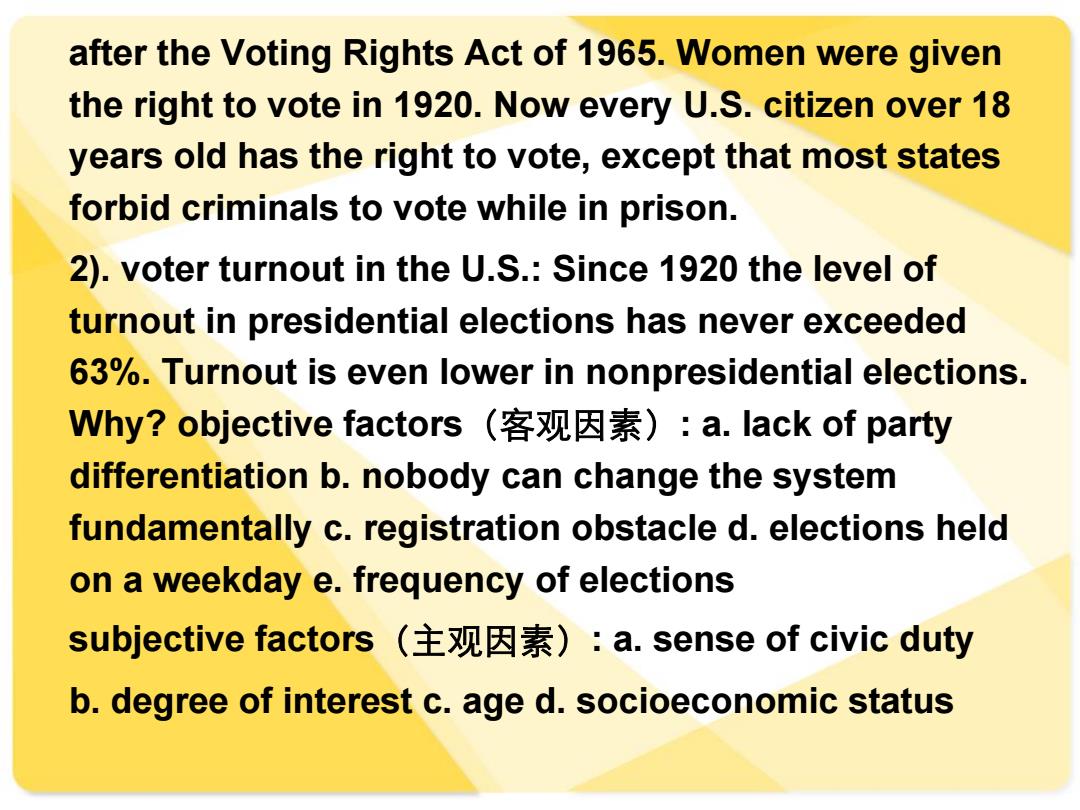
after the Voting Rights Act of 1965.Women were given the right to vote in 1920.Now every U.S.citizen over 18 years old has the right to vote,except that most states forbid criminals to vote while in prison. 2).voter turnout in the U.S.:Since 1920 the level of turnout in presidential elections has never exceeded 63%.Turnout is even lower in nonpresidential elections. Why?objective factors(客观因素):a.lack of party differentiation b.nobody can change the system fundamentally c.registration obstacle d.elections held on a weekday e.frequency of elections subjective factors(主观因素):a.sense of civic duty b.degree of interest c.age d.socioeconomic status
after the Voting Rights Act of 1965. Women were given the right to vote in 1920. Now every U.S. citizen over 18 years old has the right to vote, except that most states forbid criminals to vote while in prison. 2). voter turnout in the U.S.: Since 1920 the level of turnout in presidential elections has never exceeded 63%. Turnout is even lower in nonpresidential elections. Why? objective factors(客观因素): a. lack of party differentiation b. nobody can change the system fundamentally c. registration obstacle d. elections held on a weekday e. frequency of elections subjective factors(主观因素): a. sense of civic duty b. degree of interest c. age d. socioeconomic status
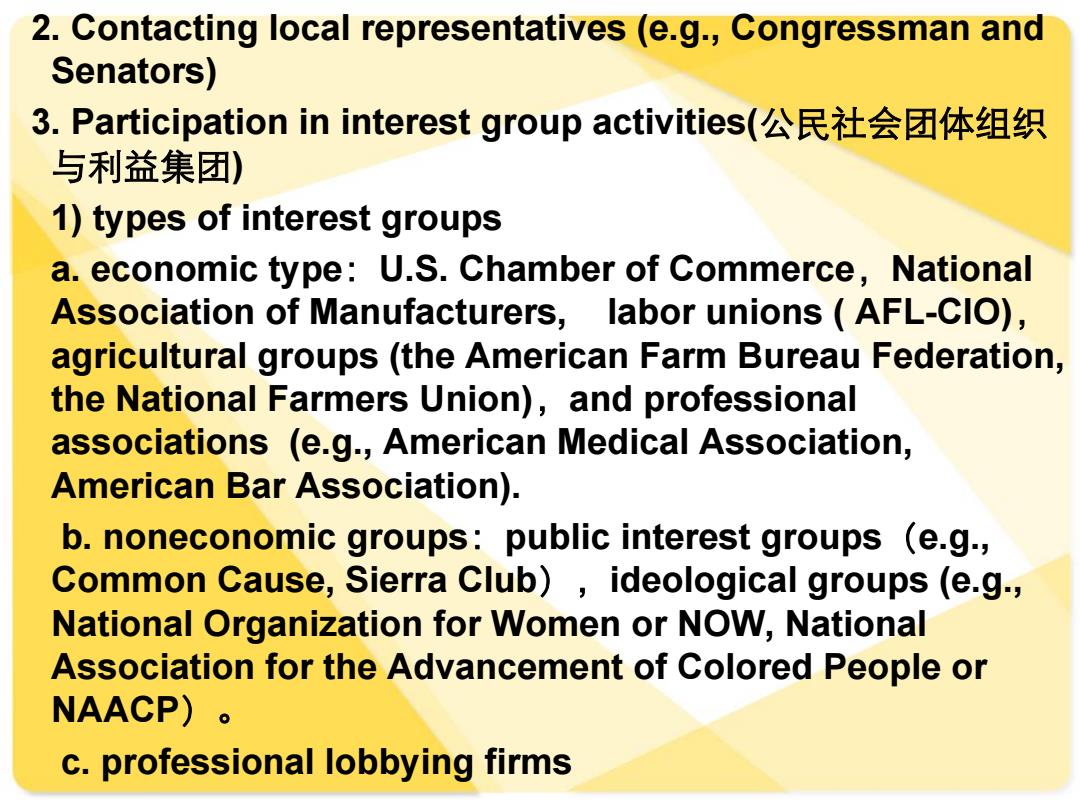
2.Contacting local representatives (e.g.,Congressman and Senators) 3.Participation in interest group activities(公民社会团体组织 与利益集团) 1)types of interest groups a.economic type:U.S.Chamber of Commerce,National Association of Manufacturers,labor unions (AFL-CIO), agricultural groups(the American Farm Bureau Federation, the National Farmers Union),and professional associations (e.g.,American Medical Association, American Bar Association). b.noneconomic groups:public interest groups (e.g., Common Cause,Sierra Club),ideological groups(e.g., National Organization for Women or NOW,National Association for the Advancement of Colored People or NAACP). c.professional lobbying firms
2. Contacting local representatives (e.g., Congressman and Senators) 3. Participation in interest group activities(公民社会团体组织 与利益集团) 1) types of interest groups a. economic type:U.S. Chamber of Commerce,National Association of Manufacturers, labor unions ( AFL-CIO), agricultural groups (the American Farm Bureau Federation, the National Farmers Union),and professional associations (e.g., American Medical Association, American Bar Association). b. noneconomic groups:public interest groups(e.g., Common Cause, Sierra Club),ideological groups (e.g., National Organization for Women or NOW, National Association for the Advancement of Colored People or NAACP)。 c. professional lobbying firms